| Compact car; Built in USA |
|
|
| Good condition price range: $1,000 – $1,800* |
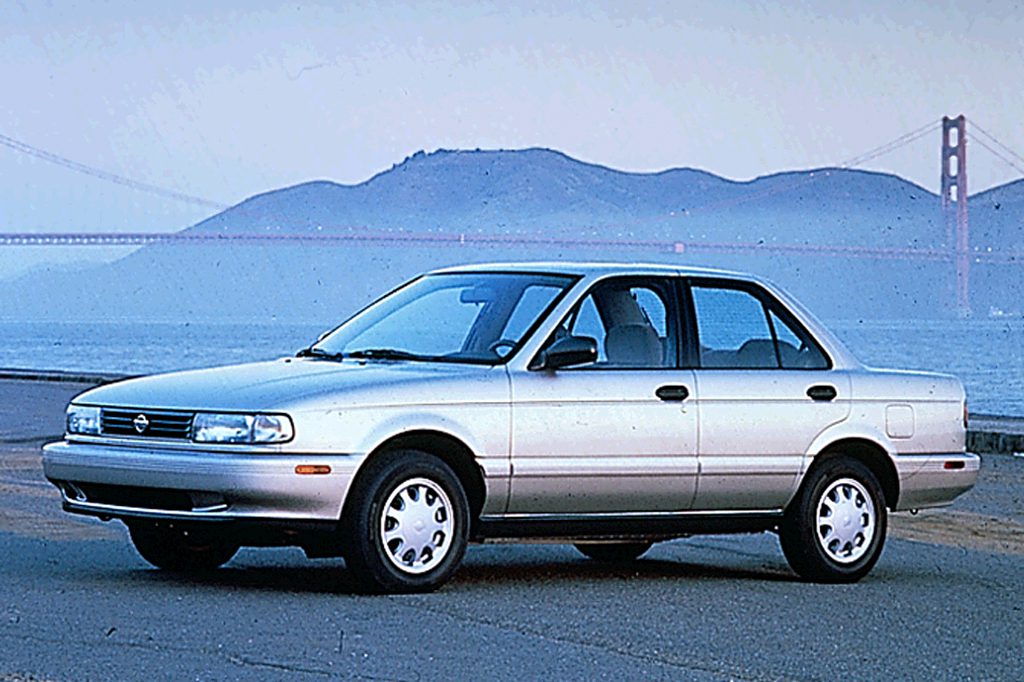
1991 Nissan Sentra GXE 4-door sedan
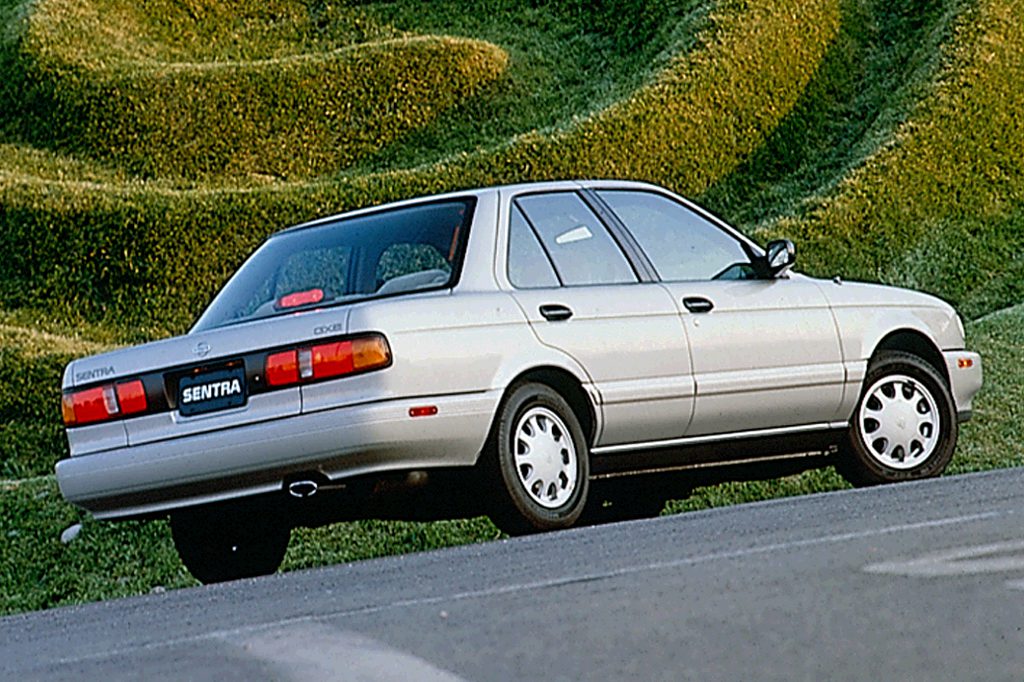
1992 Nissan Sentra GXE 4-door sedan
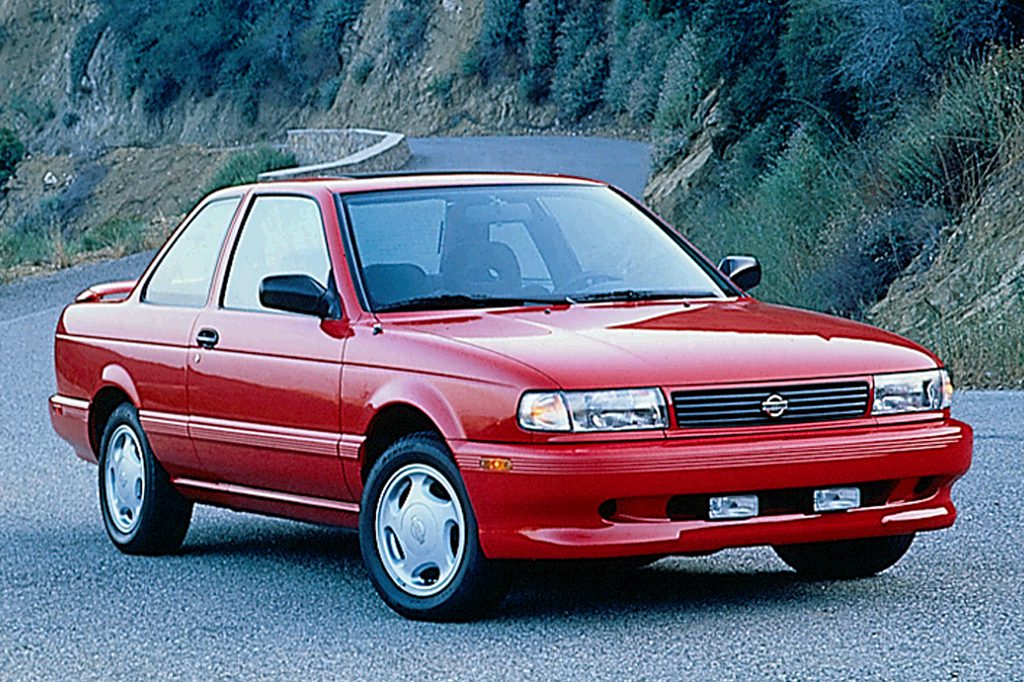
1994 Nissan Sentra SE-R 2-door coupe
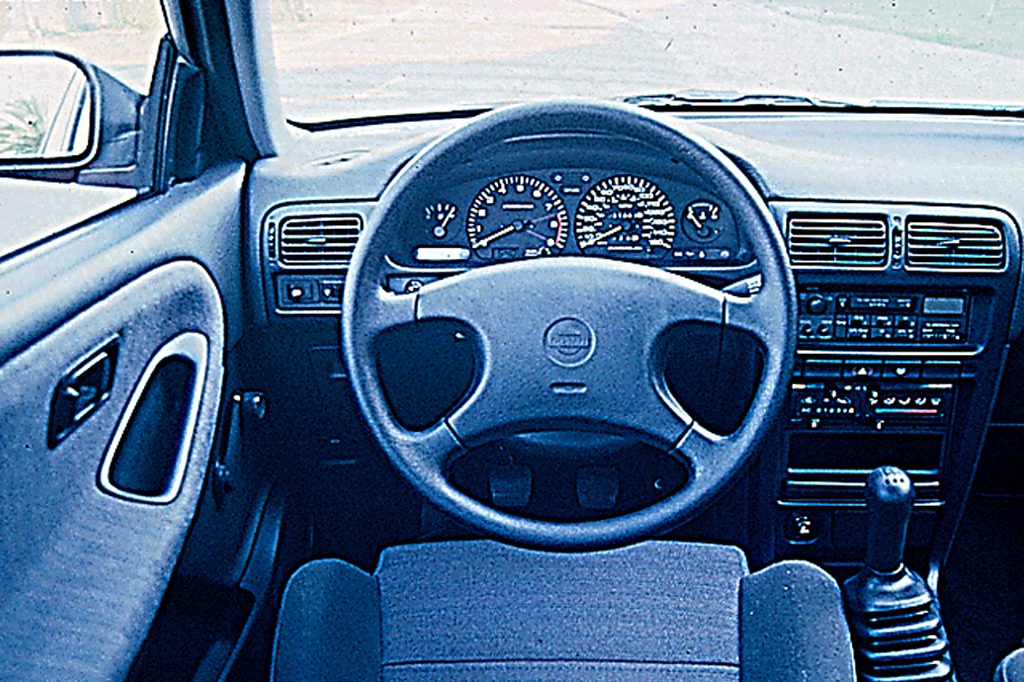
1991 Nissan Sentra SE-R interior
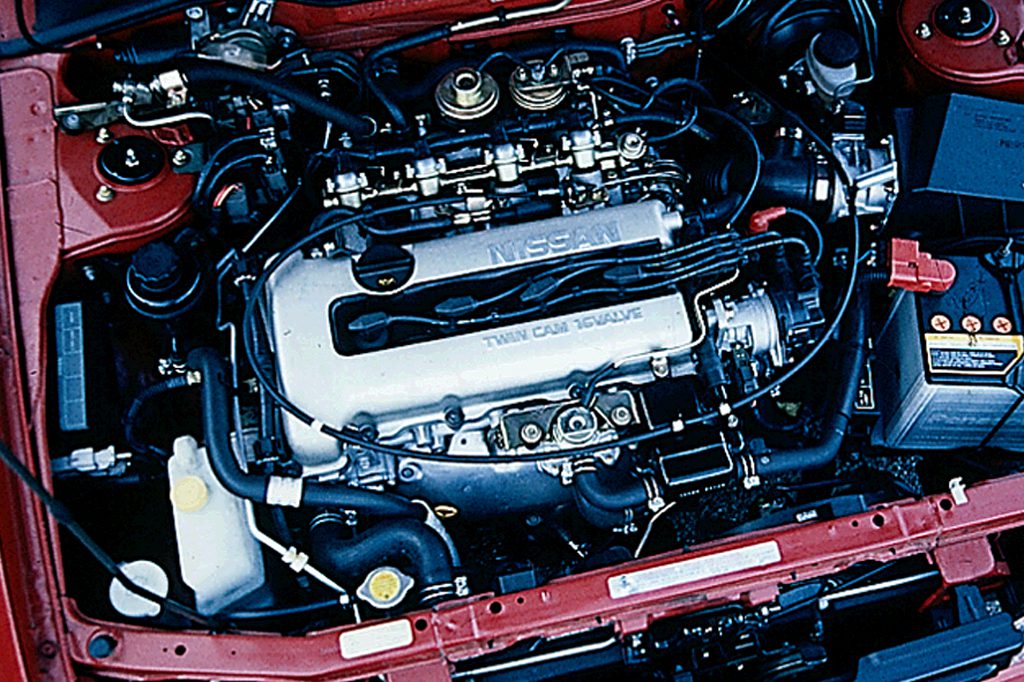
1991 Nissan Sentra SE-R engine
| Pros: |
|
| Cons: |
|
Overall, these models feel much more solid than before and are worth a test drive.
Overview
The revised Sentra lineup eliminated both hatchback and wagon models–only 2-door and 4-door notchback sedans were included. They retained the front-wheel-drive configuration and featured the same subcompact dimensions. The model lineup consisted of E, XE, and GXE trim levels for the 4-door, along with E, XE, SE, and sporty SE-R model when ordering a 2-door. All but the SE-R came with the previous Sentra’s 1.6-liter 4-cylinder. E models came with a 4-speed manual transmission standard or an optional 3-speed automatic. On the other trim levels, a 5-speed manual was standard, with a 4-speed automatic was the optional gearbox. The new SE-R featured a lively new 140-horsepower 2.0-liter 4-cylinder. It also came with rear disc brakes in place of drums. An antilock braking system was an available option on both the SE-R and the GXE sedan.
Yearly Updates
| 1992 Sentra Among the minor changes for 1992 is the addition of a passenger-side vanity mirror and black bodyside moldings on 2-door models. |
| 1993 Sentra Two major changes are made to the 1993 Sentras. One is a standard driver-side airbag for the deluxe GXE 4-door. (The safety feature is an available option for the remainder of the Sentra line.) The other is the elimination of low-level gearboxes for the E models. They’re now provided with the same 5-speed manual and 4-speed overdrive automatic as the other Sentra models. All ’93s also sport modest revisions to the grille, front fascia, headlamps, and taillamps. |
| 1994 Sentra Only standard equipment changed for 1994. |
| 1994.5 Sentra While awaiting a redesigned Sentra subcompact, Nissan continued to sell unchanged Sentras as “1994.5” models. |
